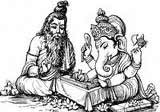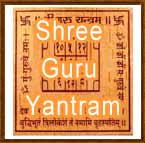|





| |
Guru Poornima - Guru Purnima
|
|

Gurur-brahmaa gurur-vishnuh
gurur-devo Maheshwarah |
Guruh-saakshaat parabrahma tasmai shri-gurave namah ||
"Dhyaan Moolam Guror Moorti, Pooja Moolam Gorur Padam,
Mantra Moolam Guru Vaakyam, Moksha Moolam Guru Kripa"
When is Guru Poornima in 2011 ?
In
2011, Guru Purnima will be celebrated on 15th of July.
When is Guru Purnima Celebrated ?
The full moon day in the Hindu month
of Ashad is celebrated as the auspicious day of Guru Purnima. The day is
celebrated by worshipping Guru, the spiritual master, who teaches us the
righteous path to divinity. Poojas are performed in prostration to him.
Importance of Guru Purnima :
Hindus celebrate it in the honour of
the great sage Vyasa, who is believed to be one of the senior most gurus in
ancient Hindu traditions, and a symbol of Guru-Shishya parampara, the Guide -
disciple tradition. Rishi Vyasa was born to sage Parashara and a fisherman's
daughter Satyavati on this day. It was Guru Poonima when he started
writing the Brahma Sutras on ashadha sudha padyami and finish it on this day.
Hence, the day is also celebrated as Vyaas Purnima.
Rishi Vyas is also sometimes called Veda Vyasa (the one who compiled the Vedas)
or Krishna Dvaipayana (referring to his complexion and birthplace). Vyasa is
also considered to be one of the seven Chiranjivins (long lived, or immortals),
who are still in existence according to general Hindu belief.
The credit of composing the authentic treatise of Brahma-sootras to explain the
background of Vedas goes to him. He also wrote the eighteen Puranas, the
Mahabharata and the Srimad Bhagavata. He completed the codification of the four
Vedas and writing of the eighteen puranas on the auspicious day of Guru Purnima.
Rishi Vyas gathered all the Vedic hymns extant during his times, dividing them
into four parts based on their use in the sacrificial rites, and taught them to
his four chief disciples – Paila, Vaisampayana, Jaimini and Sumantu. It was this
dividing and editing that earned him the name "Vyasa" (vyas means to edit, to
divide).
|
|

Guru Yantra made on Bhoj Patra
 5,100
5,100
(Indian Rupee)
 |
|

Guru Yantra on 18k Gold Plated Metal
 1,501 1,501
(Indian Rupee)
 |
|

Swetark Ganpati
 3,251 3,251
(Indian Rupee)
 |
|
Significance of
Guru Poornima in Astrology:
Guru is also known as Jupiter in
Astrology. Guru affects the knowledge, blessings and guidance of the master,
thirst for wisdom, education prospects and marriage prospects in a native's
birth Chart. Guru governs the 9th and 12th house in the horoscope of the kaal
purush.
A weak Jupiter is a cause of many
problems - Education, Wisdom and Marriage to be the foremost. The harmful
Guru Chandaal Dosha and Pitra Dosha are also caused
because of the malefic effect on Jupiter.
A major cause for marriage delays
is weak Jupiter or afflicted jupiter. Guru Purnima is one of the few most
auspicious days in ayear when the poojan and remedies to make jupiter strong and
to get rid of the doshas may be performed.
Guru Purnima's Significance in Buddhism :
Buddhists
observe on this day uposatha i.e. to observe eight precepts. Vipassana
meditators practice meditation on this day under the guidance of their teachers.
During the rainy season lasting for three lunar months from July to October the
Buddhist monks remain in a single place, generally in their temples. In some
monasteries, monks dedicate the Vassa to intensive meditation. During Vassa,
many Buddhist lay people reinvigorate their spiritual training and adopt more
ascetic practices, such as giving up meat, alcohol, or smoking.
Guru Purnima's Significance in Jainism :
According to Jain traditions, it was on this day,
falling at the beginning of chaturmas, the four month rainy season retreat,
Mahavira, the 24th Tirthankara, after attaining Kaivalya, made Indrabhuti
Gautam, later known as Gautam Swami, a Ganadhara, his first disciple, thus
becoming a Guru himself, therefore it is observed in Jainism as Guru Purnima,
and is marked special veneration to one's Gurus and teachers
Guru Poornima's Significance in Indian Agriculture :
This day is of deep significance to the farmers,
for it heralds the setting in of the much-needed rains, as the advent of cool
showers usher in fresh life in the fields. It is a good time to begin your
spiritual lessons. Traditionally, spiritual seekers commence to intensify their
spiritual 'sadhana' from this day.
Who is a Guru?
'Gu' stands for Gunatheeta (attributeless). 'Ru'
signifies Rupavarjita (formless).The Sanskrit root "Gu" means darkness or
ignorance. "Ru" denotes the remover of that darkness.Therefore one who removes
darkness of our ignorance is a Guru. God, who is attributeless and formless, is
the true Guru.
Bhagavadgita gives guidelines and qualities of a genuine Guru. A true Guru has
credentials to impart true knowledge free from speculation and never claims he
is god. He knows god is supreme and we are subordinate to him. He exemplifies
wisdom, peacefulness, self-control, austerity, piety , tolerance and strong
faith in god. He must be from a succession (eg.Brahma, Narada, Vyasa,
Shankaracharya).
| Guru Poornima | Guru Purnima |
|
| |



|
![]() 0091 - 9839117339 , 0091 -
9336344500 (24 x 7 Availability)
0091 - 9839117339 , 0091 -
9336344500 (24 x 7 Availability) ![]() astro_jyotishi@yahoo.com
astro_jyotishi@yahoo.com





